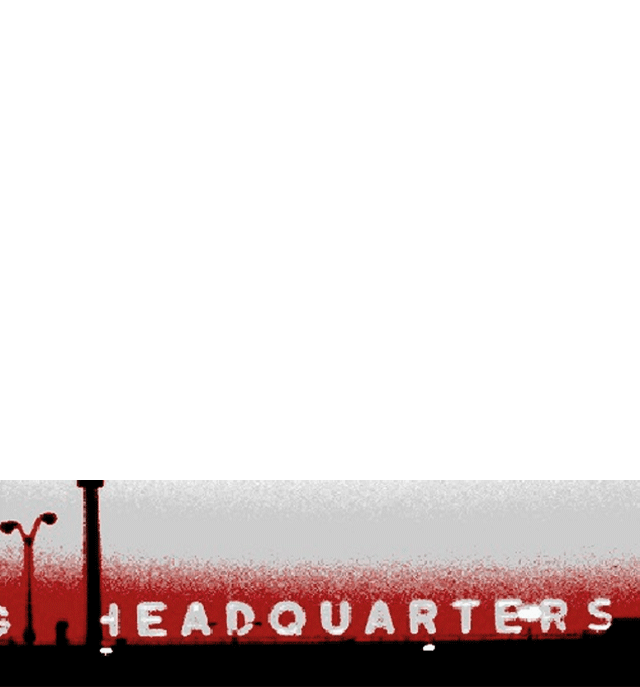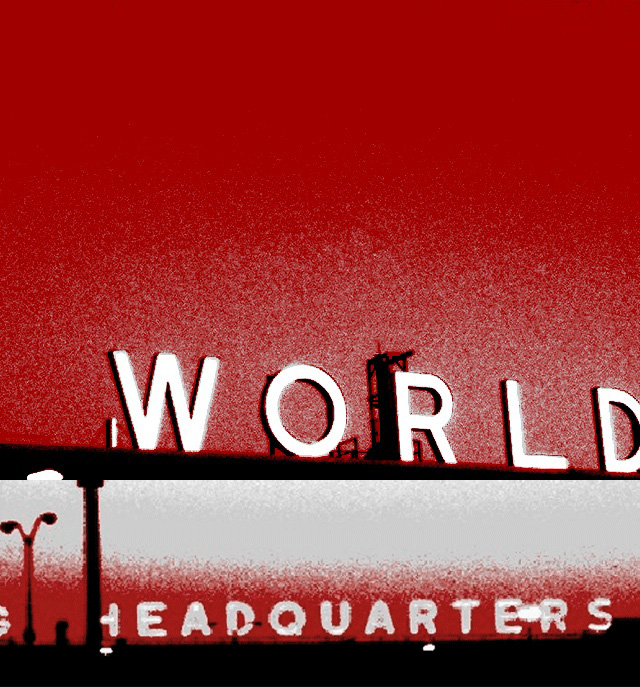archive: review-from the revised edition of the end of print: from the revised edition of the end of print. (now the largest selling graphic design book ever)
by Bill Gubbins
I love R. Meltzer! So, this little piece, this etude really, is dedicated to him! And to his work! And to his life!
And to the technique he pioneered, c.1973, in his still-unpublished autobiography, excerpted in an issue of Fusion magazine back t-t-t-then, that featured an exclamation point at the end of every sentence! Yes, every sentence!
I still remember! It was a big deal to me! I kept laughing so hard, I couldn’t stop! But he was serious about doing this exclamation point thing! And I didn’t know if it was okay that I found it so wonderfully funny! And so wonderfully great! And it was an epiphany that something so simple could cause such a powerful effect! He just let it go: and put an exclamation point, at the end of, every sentence!
And I went: How simple! How brilliant! And then: I could have thought of that! I should have thought of that! But I didn’t! And now, he had! And forever I be there, but worthless besides him!
Now, of course, it was hilarious (and hea-vy, too) that he left in that exclamation point! (At the end of every sentence!) But his words were good, too! And I paid damn close attention to that, because I did not-I repeat did NOT-want to feel that I got carried away by some goddamn gimmick! By some trick! By some ROCK CRITIC trick! And I was worried that somehow I would be deceived-no, better yet, see-duced-into thinking that what I was reading was great writing when, in point of fact, it was mediocre writing in the service of a little known (and-ah-ha!-I later found out: Celine inspired!) literary gimmick that was pulled out faster than you’d need Alka-Seltzer on The Good Ship Lollipop!
So, man, oh man, I went back and pored over that damn story of his, over and over again, and over and over again, to try to figure out how to separate the specialness of this device from the actual words it went with and to try to establish, clearly establish, you know, lawyer-style, that I hadn’t been goddamn had! By R. ding-dang Meltzer of all people!
Now my conclusion-then, as now-was that no, he had really meant it, that he wasn’t just trying to be s-s-s-silly, and that it was ALL RIGHT for me to just lean back and enjoy it, to. . . let it be!
And I knew, just knew, knew, knew it; that this technique, this exclamation point thing (at the end of every sentence!) was soo good, sooo smooth, as it sent chills right down my b-b-b-backbone, that it would be picked up by every damn writer everywhere and that this exclamation thing (!) was going to be everywhere, all at once, at the very same time, ubiquitous!
But I can’t get away from how impressionable I was and what it meant to me and how refreshing I found (that’s the best word-refreshing), I found it that he used an exclama-tion point at the end of every single godforsaken sentence-every single sentence!-in that piece and I read it so carefully, time and again, over and over and over (again!) to see if I could find the one (one!) sentence that he’d buried that didn’t have an exclamation point at the end of it!
And, no, I never found it, cause: every single sentence in this piece had an exclamation point! At the end!
And, yes, finally, after countless rereadings, and ponderations, of 1973 proportions, I concluded that: he meant it! Meant for every single sentence to have an exclamation point at the end of it! And that no, gimmick couldn’t be separated from the words, nor the words from the gimmick, and it was okay that it was that way and I shouldn’t worry anymore about it! Ever, ever, ever again!
I should just accept: R. Meltzer’s a great writer and, gimmick or no, it worked! It just worked! Of course-ah-HA! ALL you epiphany hounds, here it comes: think how awful this gimmick would be in the hands of some writer-some hack!-so much less skilled than R. himself! Of course you do! . . .
Radical gear shift ahead! Grrrrrrind me a pound! Ungrrrrrungh!
The End of Print was an awful title for a book and I felt so at the time and I still feel so today! More presumptuous than all get out! And it bothered me so damn much that I had to sort of figure it out! In fact, the title had the same effect-but in reverse qualitative stool-than the exclamation point!
Man, that title made me mad! Who in the f’ do Dave and Lewie think they are, soundin’ this pretentious death knell for all this print stuff?!
You know, bad, bad, bad title, conveying a bad, bad, BAD thought! You know: oooohhhh, oooohhhh, the boogie men have come! Oooohhhh, oooohhhh, Dave and Lewie am gonna blow the whole house down! They think print is gonna catch fire and die! All our hard word, our loyalty, our love of the printed word, or precious words, KILLED by a book (a folkin’ BOOK!) that says: That’s it! Adult swim! Everybody out of the pool! Party’s over! Put on your clothes, boys, I’m taking you home! And, no more paper now, baby. . .blue!
But then I woke up! And I realized the title was just a marketing gimmick! A way of socking it to the reader! (Oh, you helpless reader, you, standing amidst the dusty airwaves of The Strand!) And, in the same way I reconciled myself to accepting my love of R.’s exclamatory technique, so I came to accept my hate of the title of The End of Print (think of it like an old-fashioned radio echo on WLS-the voice of labor!-in Chicago before rollin’ “Woolly Bully”: The End of Print-Print-Print-rint-rint-rint-int-int-int-nt-nt-nt-t-t-t-t) cause it was just, it was just: TOO MUCH!
But just think about how David’s technique has fared in the hands of those lesser talents than himself!
Of course you do.












